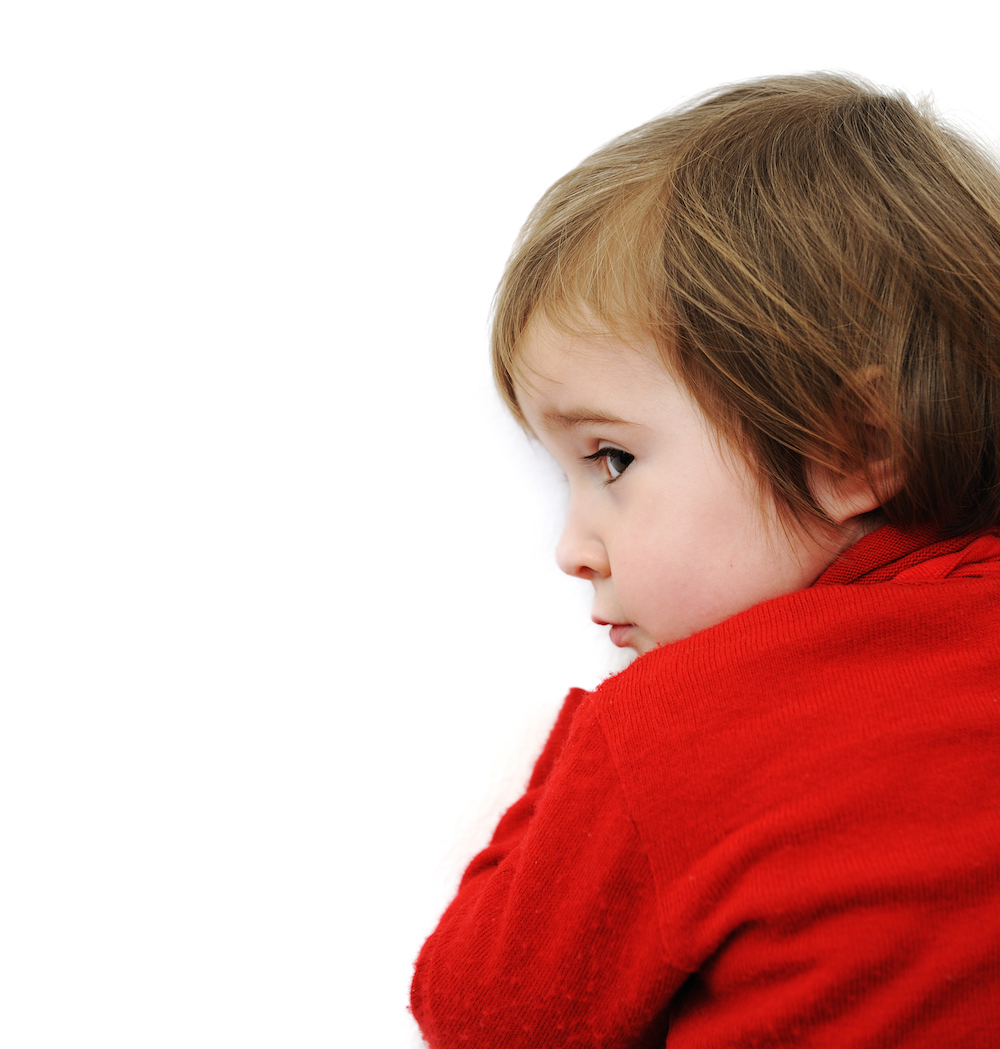I’ve always been a fan of organized activities. As a kid, I participated in sports and dance classes, and went on to join things like student council and my college newspaper. Today, I’m involved in moms’ groups and the PTA.
If there’s a schedule and a coordinating T-shirt, I’m there.
So as soon as our first son was old enough, we signed him up for swimming lessons.
“This will be fun!” we thought. We’d meet other parents, our son would make new friends and everyone would go home smiling and smelling of chlorine.
Boy, were we wrong (about everything except the smell, anyway). For the entire six weeks, while all the other babies gleefully splashed and clapped along to Baby Shark, mine cried and clung to my shoulder for the full 30-minute class, inching his way up my body to ensure as little contact with the water as possible.
OK, we thought, maybe he’s not ready for swimming. So we took a break from the pool and signed up for toddler tumbling. Parents were sent out of the room so as not to distract the gymnasts, which sent my child directly into the fetal position.
We kept trying — T-ball, soccer, basketball, cross-country skiing. There were improvements here and there, but more often than not, the reluctance and fear took hold.
And it wasn’t just organized sports that caused him angst — birthday parties, playdates and a particularly memorable preschool graduation ceremony all made him freeze up and want to hide in a corner.
When we asked him what was wrong, we got only a shrug or barely audible, “I don’t know” in return. Sometimes we’d make him stick it out; sometimes we’d go home early or skip a week entirely. We didn’t want him to be miserable, of course, but we also wanted to teach him the importance of following through on commitments.
A playdate with his best friend from preschool? That couldn’t possibly be scary … could it?
There’s a name for it
As is usually the case, even when it seems like your kid is the only one exhibiting a certain behavior, he’s most likely not alone. Extreme shyness, formally known as “behavioral inhibition,” affects 5% to 10% of kids, and refers to a temperament that causes someone to feel distress or fear when faced with new environments, situations or people.
According to Megan Gunnar, director of the Institute of Child Development at the University of Minnesota, it can be identified “as early as the first few months of life.” It may start as oversensitivity to stimuli such as loud noises or bright lights, and over time can become more focused on people, “because people are very unpredictable,” Gunnar said.
While behavioral inhibition is a temperament and not a disorder, it can still have adverse effects on children who have it. For one, if they get hurt or need something, they’ll be less likely to tell a grownup who could help them. It can also make it harder to develop relationships with peers and make them reluctant to participate in class, which can lead to feeling isolated and ignored.
“I worry sometimes that they get a little lost in the shuffle,” said Erin Hamel, an early childhood special education teacher, who has experience with exceptionally shy kids. Some teachers, she said, might be more likely to walk away from the “easier” kid — who will just sit there — to deal with more pressing matters, such as a child coloring on the wall.
Looking for social nuances
Hamel, a mother of three, also has experience with extremely shy kids at home.
She first noticed her oldest daughter’s shyness when she was an infant. Comparing her daughter to her nephew of the same age, Hamel was struck by her tendency to sit back and watch while he played. It really hit home on a trip to Michigan to meet some of her extended family for the first time, where well-meaning greetings and hugs made her daughter cry. In fact, her daugther physically pushed the unfamiliar relatives away.
Wondering if her daughter’s behavior could be an early sign of autism, she consulted with her pediatrician, who explained that there are many nuances of communication that aren’t verbal — but are still social in nature.
One test the doctor suggested was to feed her daughter one piece of food at a time, while trying to see if she looked at the food or the person’s face when she wanted more.
“She looked at my face every time,” Hamel said. “So she is socially wired; it’s just not something she’s comfortable with.”
Dr. Sarah Jerstad, a child psychologist at Children’s Minnesota, said some shyness is developmentally normal: “For babies and early toddlers, there’s something healthy about fearing new and novel situations.”
But, she said, if it persists or gets worse, it can disrupt functioning.
While many people consider themselves shy, behavioral inhibition takes it a step further and can be a precursor to a more serious diagnosis — social anxiety.
Typically diagnosed between the elementary and early high school years, social anxiety presents as extreme avoidance or real distress in social situations, and is a persistent pattern, Jerstad said. It also has to be present with peers, not just adults, and centers around a fear of scrutiny.

Exposure is key
If any of this reminds you of a child in your life, the good news is there’s a lot you can do to help. Talking to your pediatrician and, if recommended, seeing a child psychologist, are good places to start. Jerstad boils down a typical treatment plan into three key steps:
- Try to discover why a child feels fearful or anxious and learn how to support him or her.
- Help children develop coping strategies they can use in situations that make them feel anxious.
- Make a plan for slow, graduated exposure to new situations that will give the child a chance to practice socializing, including praise and rewards for being brave.
Hamel learned that a little bit of preparation could go a long way for her daughter, who’s now 9. After that memorable trip to Michigan, she made a picture book of their extended family members that she could pull out before subsequent family gatherings. As her daughter got older, she prepped her with common questions relatives might ask, and modeled how to appropriately greet them.
Once a parent or other adult recognizes that a child is shy, it can easily become one of their defining characteristics: “This is my son. He is 5, and he is shy.”
Even though that may be true, it doesn’t have to be pointed out to everyone your child meets. Instead, Jerstad coaches parents to focus on the positives, such as being a good listener or being observant.
In the classroom and beyond
At school, pairing quieter kids with a peer can be very beneficial, said Alicia Estrellado, an elementary school teacher and mother of two in St. Paul. Forcing a child to read a passage in front of the entire class is fortunately no longer the norm, and sharing learnings one-on-one with a classmate can be much less intimidating.
“If you’re uncomfortable, you can’t learn. Our brains don’t work that way,” Estrellado said. “Find what makes them comfortable, and how they can best express what they’ve learned.”
In her classroom, that means asking quieter kids if she or a peer can share their ideas with the class, or even recording a presentation in advance rather than making them do it live.
Jerstad said continuing to expose behaviorally inhibited kids to new situations and people is key. While it can be tempting to just stay home, doing so can send a signal that there’s something to fear after all.
“As much as possible, this is a behavior that has to be practiced,” Jerstad said. “Get kids involved in social interactions in some way — sports, activities, programs like ECFE, where kids and parents can be interacting with other kids. Practice from an early age is really critical.”
Gunnar encourages parents to stay the course: “The temptation is ‘They don’t like it, so let’s not go.’ But the reality is, the more they are exposed to new people, new places, the better. Pretty soon, what was novel isn’t novel anymore.”
As for my son, he started a new session of 6U soccer this spring. Between having 100 days of kindergarten under his belt, plus a couple familiar faces from school on the team, his participation and enjoyment have significantly improved.
He may not volunteer to be team captain or shout for someone to pass him the ball, but he’s there, he’s participating — and he’s even having fun.
HELPFUL RESOURCES
⊲ Children’s Minnesota Behavioral Health Program, childrensmn.org
⊲ Early Childhood Family Education (ECFE), education.mn.gov
⊲ Andrew Kukes Foundation for Social Anxiety, akfsa.org
Erica Wacker is outnumbered in St. Paul by her husband, two sons and dog (also male). A transplant via Chicago, she has adopted Minnesota as her forever home — winters and all.




















